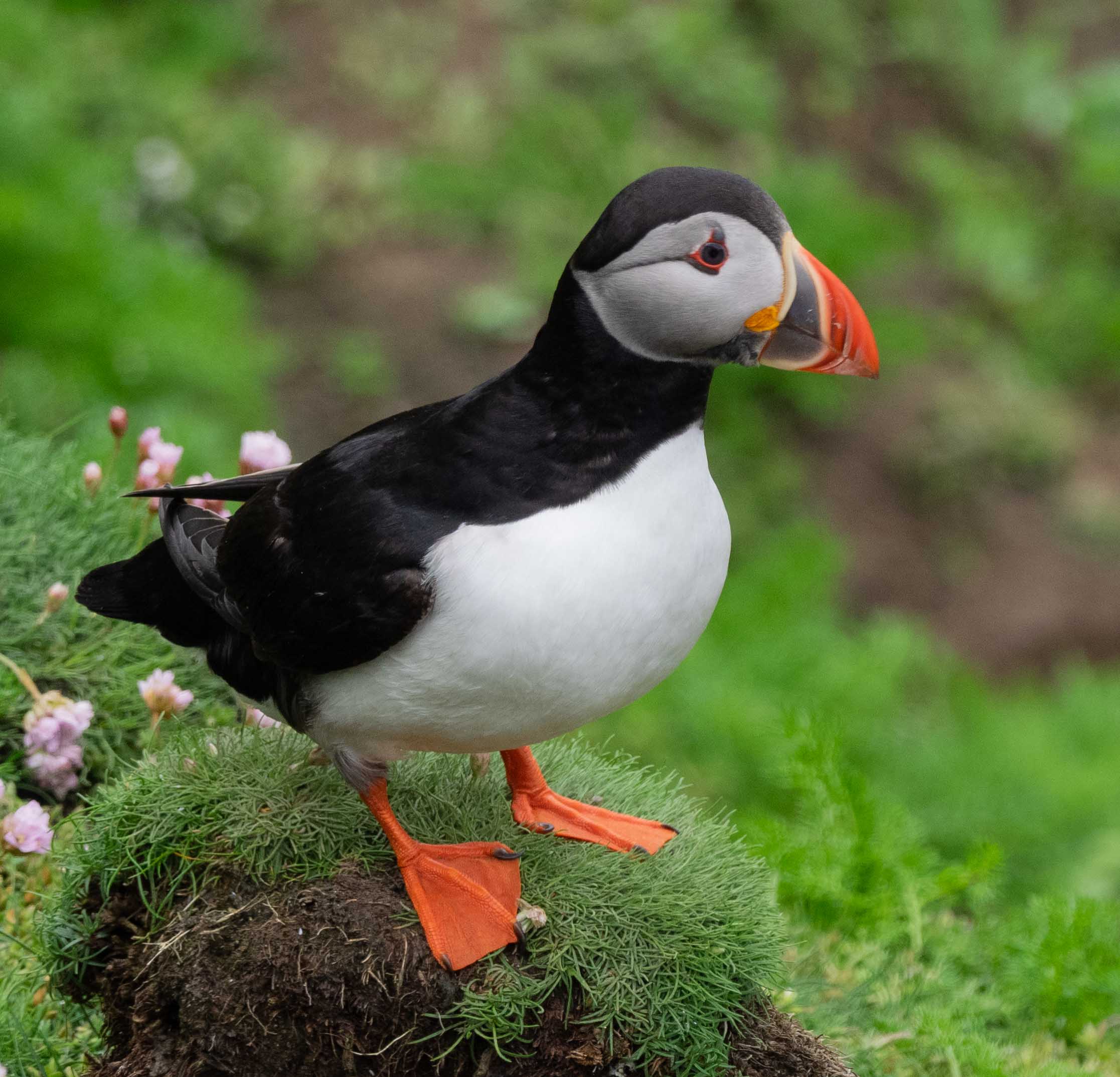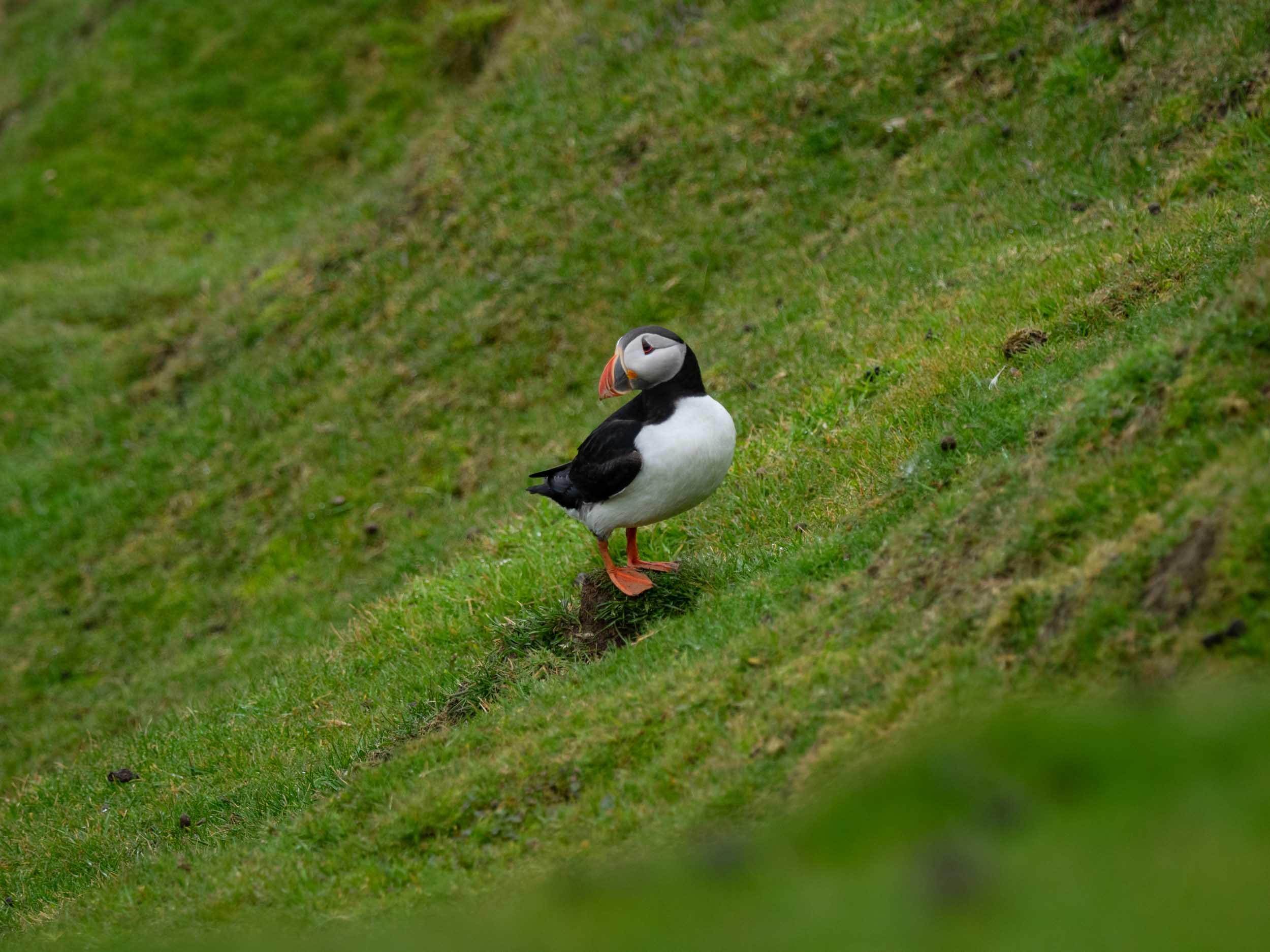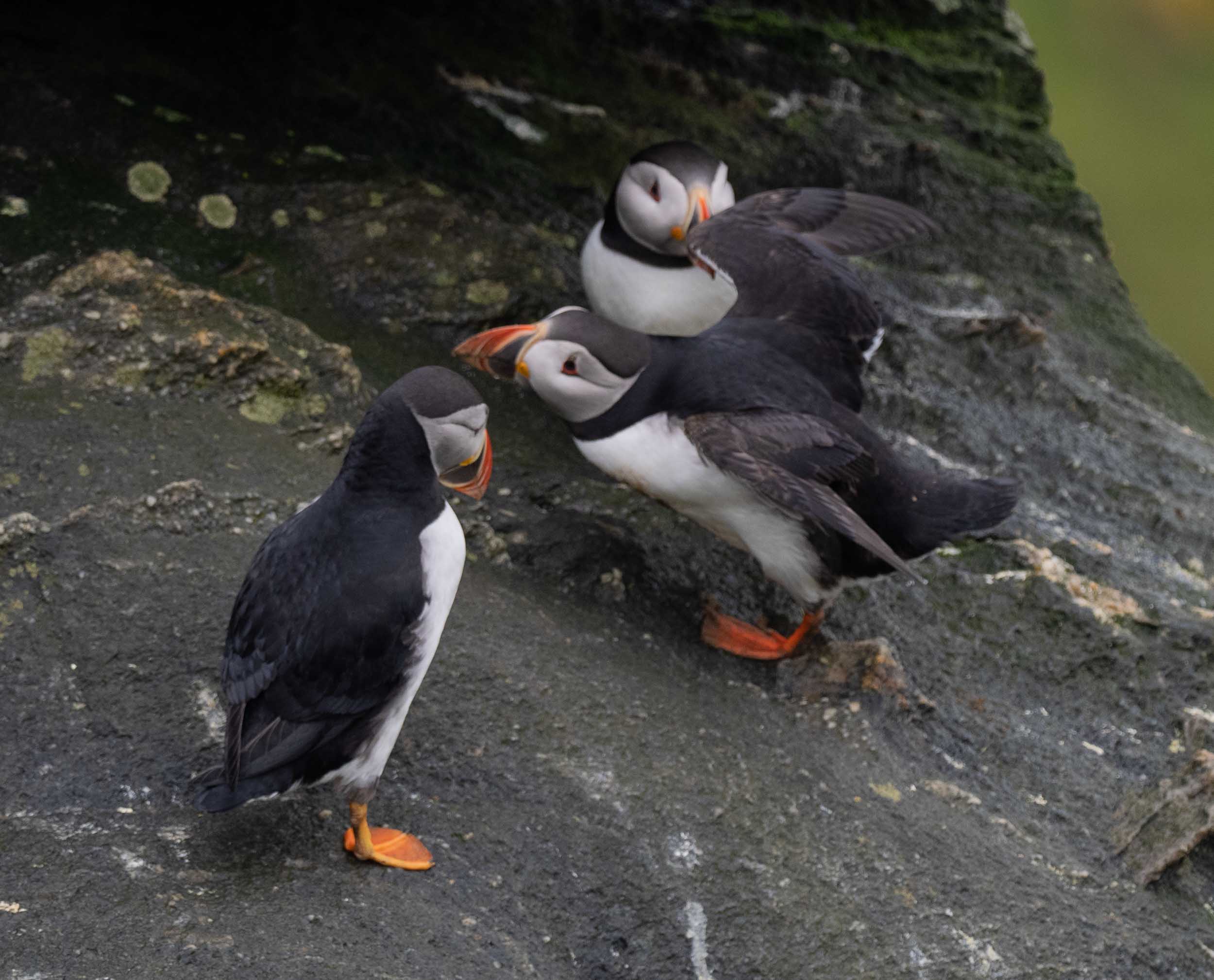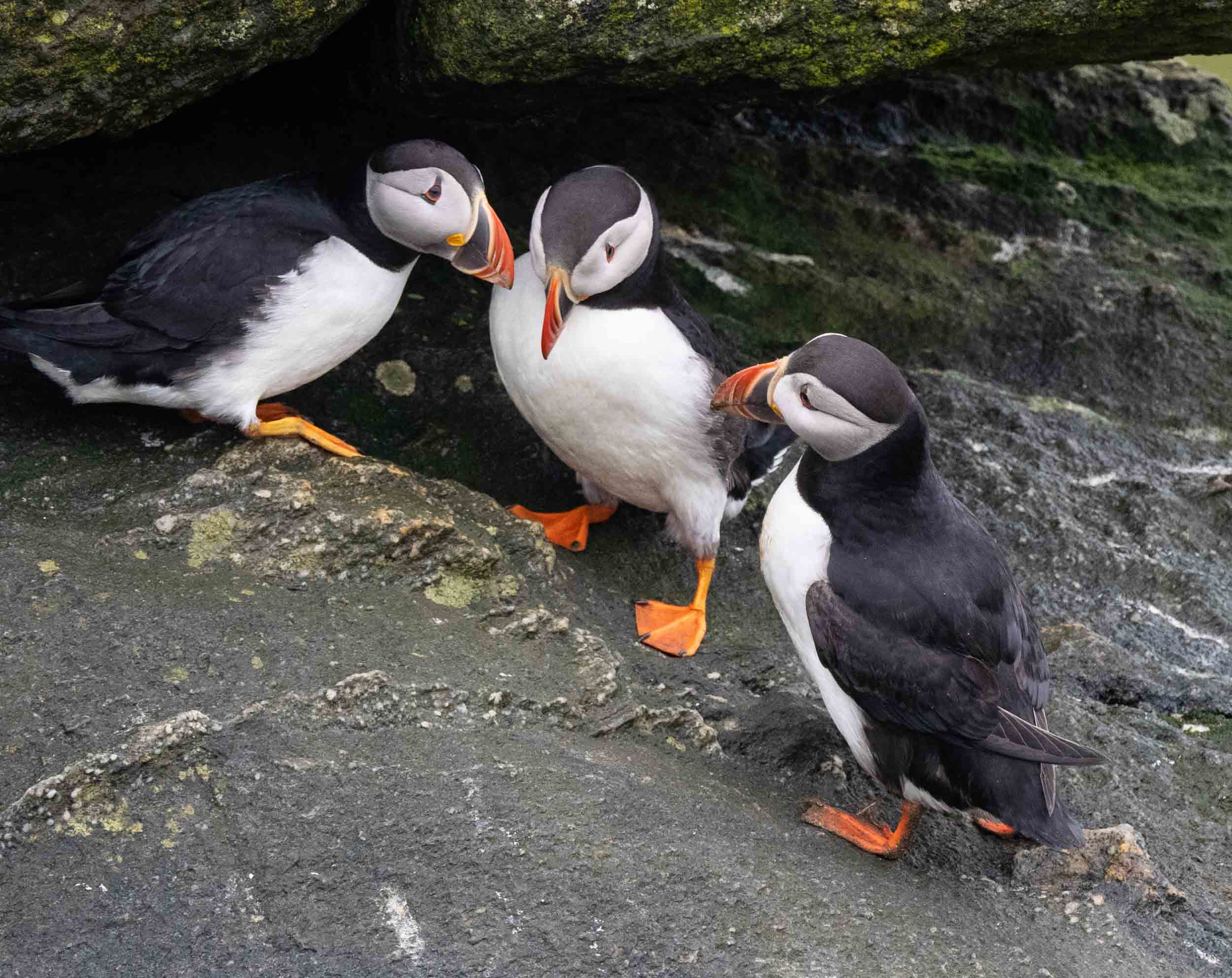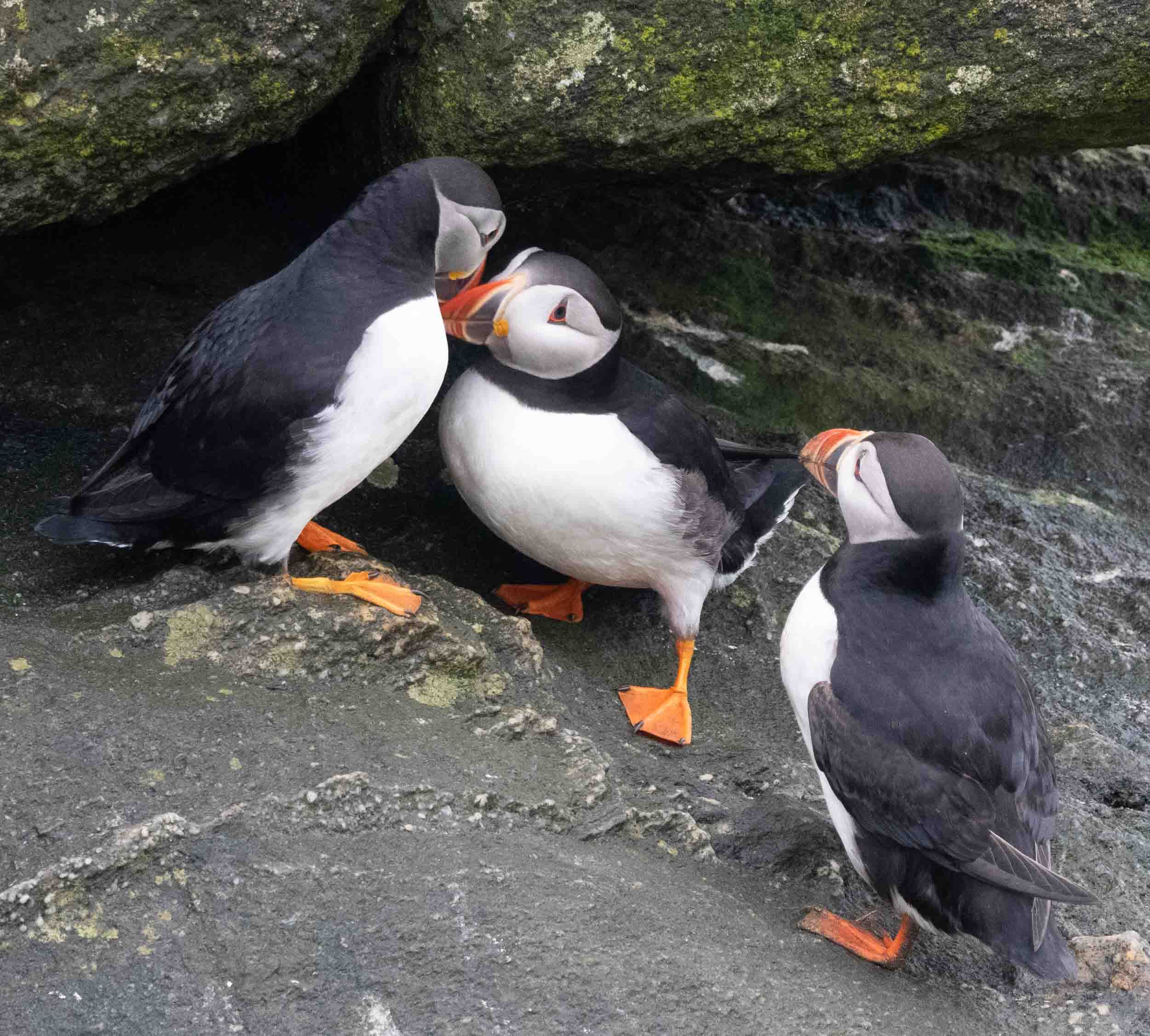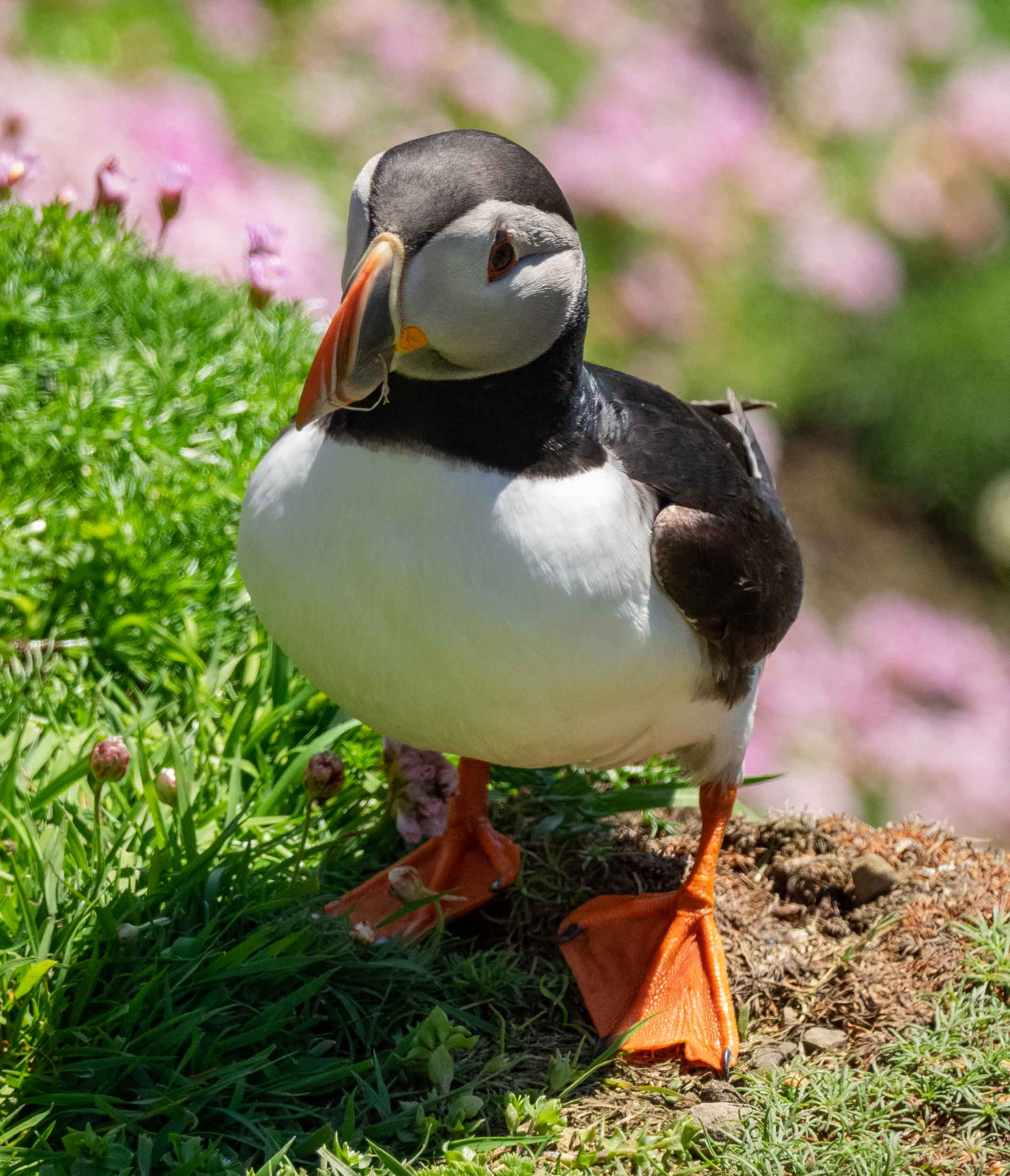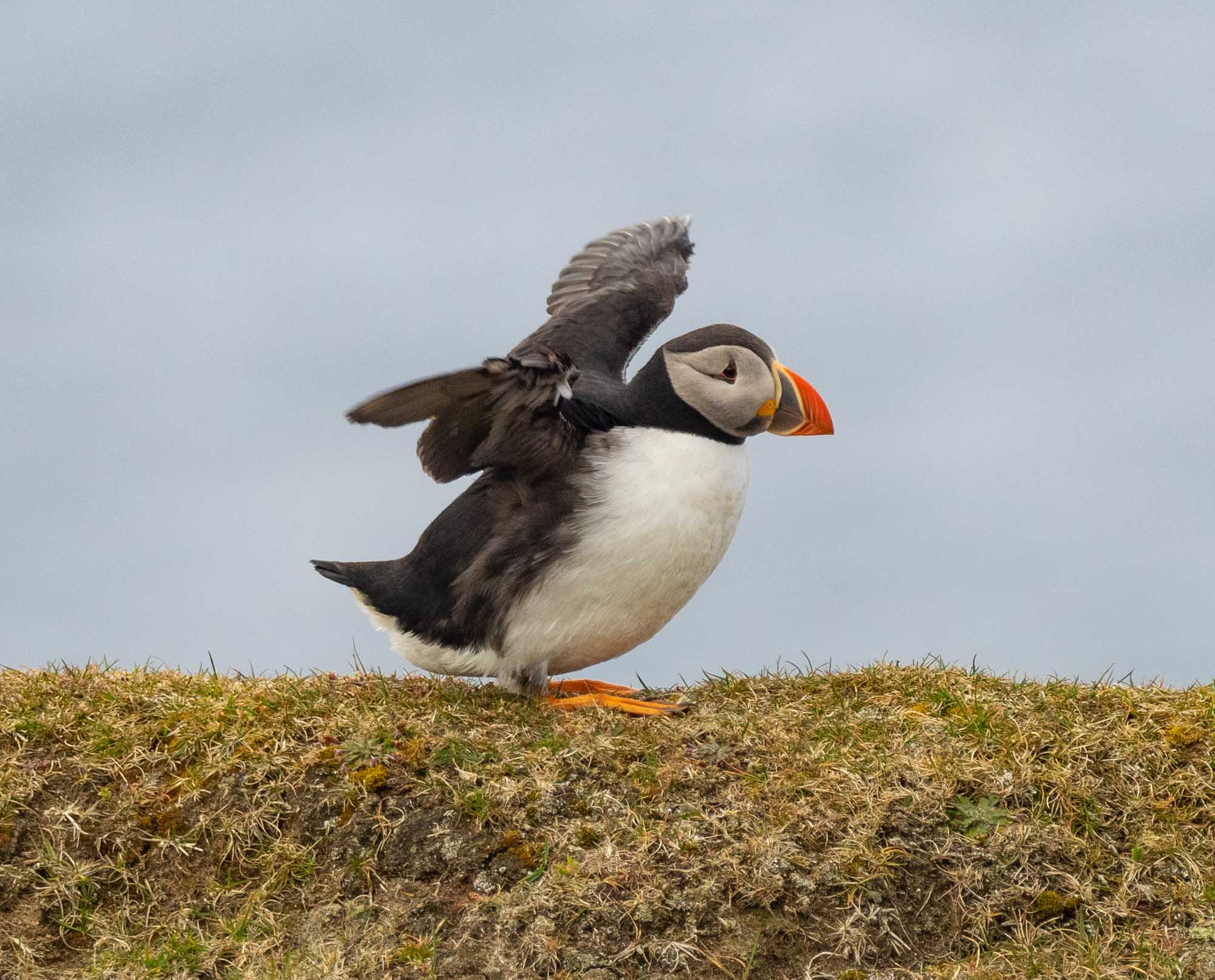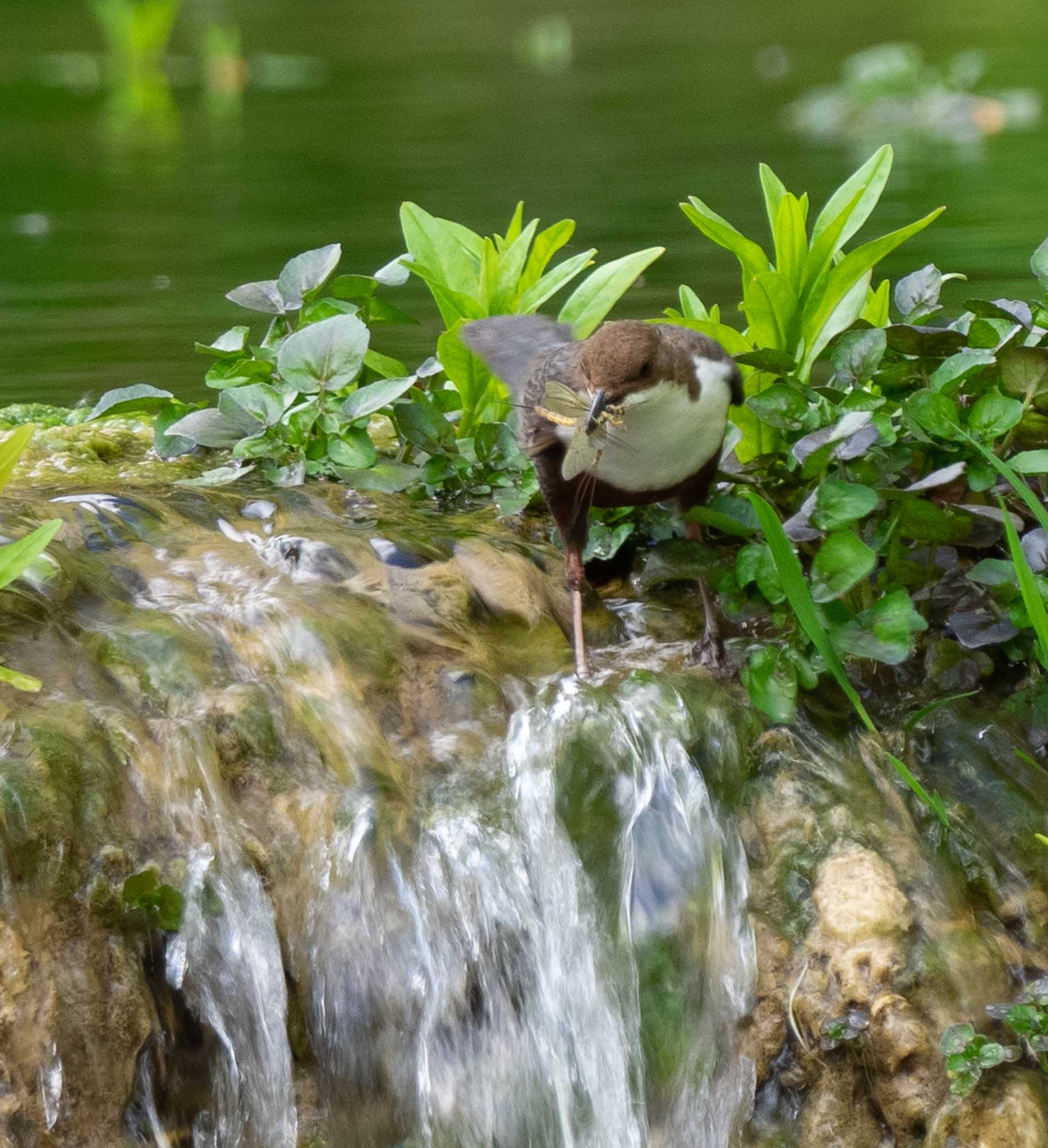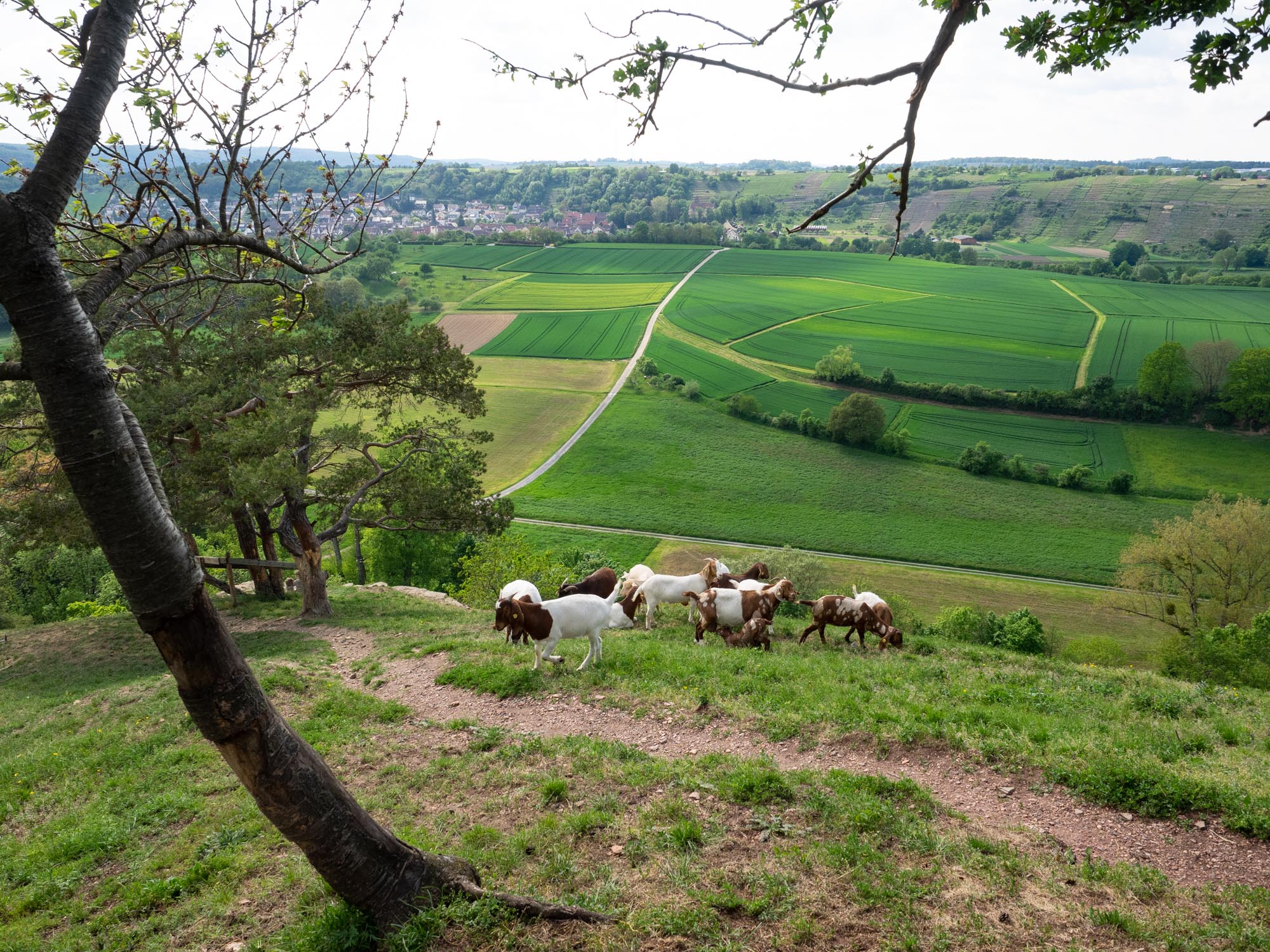Shetland Islands: the seabird cliffs
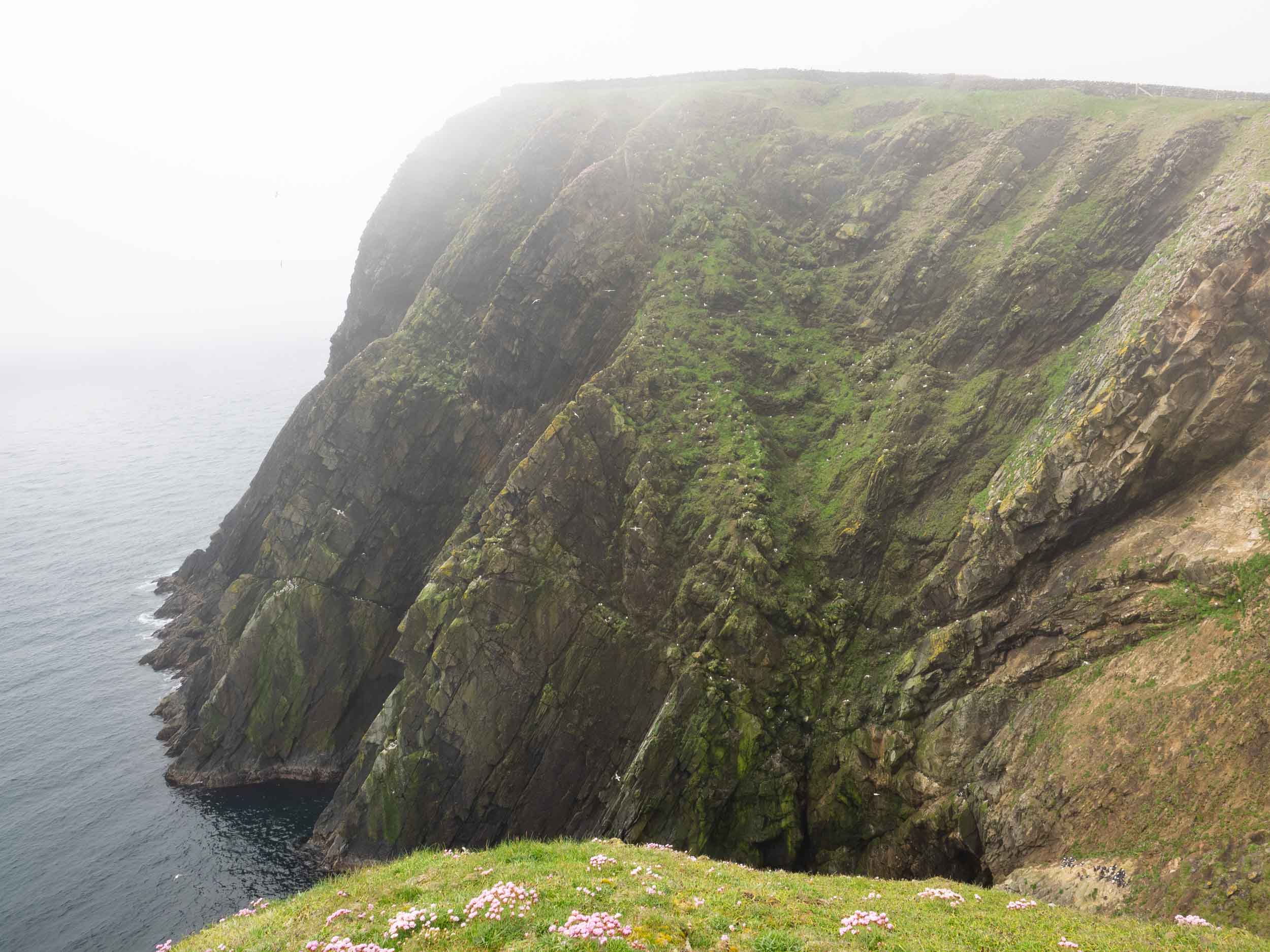
For ten days on Shetland we watched thousands of birds gathering and breeding on the sea cliffs. We knew little of their lives before we arrived, so this has been a journey of discovery and learning.
(28th May – 7th June, 2019)
Watching and photographing the birds, we learned to recognise species we’ve never seen before and came to know something about their behaviours. Yet we realise that this is but a tiny glimpse, a brief window into their early nesting. While some birds had eggs, most were still pair bonding and nest building. The busy period of chick feeding was weeks away. And, of course, we saw nothing of the real life of sea birds – the many months and even years spent on the open ocean, hundreds of kilometres from the nearest shore.
Happily, en route to Shetland we picked up a wonderful book. The Seabird’s Cry by Adam Nicolson is one of the best nature books we have ever read. It is poetic and emotive, descriptive and informative. It is uplifting, poignant and highly scientific. Reading this during our Shetland stay, and since, has enriched our understanding of the birds we saw. It helps us appreciate what we were witnessing as we watched them wheeling about the cliffs, hunkered down on their nests, or emerging from their muddy burrows.
Here is a little of what we’ve seen and learned about four of the cliff nesting seabirds: the fulmars, guillemots, gannets and puffins.
Fulmars: scent-trackers and wind-runners
Grey and snowy white, but nothing like an Australian seagull. With their large black eyes and smiling beak, fulmar appear both calm and wise. Rocky shelves and grassy ledges everywhere were providing roosts and nests for these regal birds.
Fulmar (Mallie in Shetland) – Fulmarus glacialis
Fulmars were the most widespread and numerous of the birds we saw on Shetland. Perhaps this should be no surprise. An estimated 500,000 pairs breed along the Scottish coasts, and the cliffs of the Shetland Islands are prime territory.
These photos misrepresent the fulmar. They are wind runners, magnificent in flight, soaring for hundreds of kilometres on wings that are locked in place, rarely beating but simply making subtle shifts in pitch and angle, riding the strong Atlantic winds.
A fulmar uses as little energy in flight as it does sitting quietly on the nest … but only when the wind blows strong. When the wind drops, the birds rest on the sea surface. And it is there that they feed.
The tubenose
Fulmar are opportunistic feeders. They take fish, squid and any other available food near the surface of the sea, diving only rarely and clumsily. Their challenge is to find such food. The oceans are vast, and most of the surface starkly empty. This is the same challenge faced by the fulmar’s cousins, the shearwaters, petrels and albatrosses. And all these birds use the same strategy to locate fish. They smell them.
Fulmars are ‘tubenosed seabirds’. The elaborate beak, with the large nostril opening on top, is part of a well-developed olfactory system. They can detect airborne chemicals at very low concentrations.
They even use smell to navigate. Fulmars recognise different parts of the ocean based upon differences in the smell of the sea.
The story of how they detect fish is quite fascinating, and only recently discovered. It goes something like this:
Phytoplankton in the ocean give off a chemical called DMS, particularly when they are damaged. This chemical is, in part, what we too recognise as the smell of the sea.
Phytoplankton blooms attract krill, which cause the release of DMS as they chomp through the phytoplankton.
Krill attract fish and squid, and the krill give off their own unique set of chemical odours as they are chomped.
Fulmar, albatross and other tubenosed seabirds are attracted by the DMS and also by the krill-emitted chemicals.
Worryingly, floating plastics also emit DMS. This attracts the seabirds, distracting them from their search for food. They don’t necessarily eat the plastic … it doesn’t usually look like food. But it’s a “sensory trap” (p. 231 Nicolson) for fulmars, petrels, albatross and shearwaters.
Scent also plays a part in breeding. Each fulmar has its own particular, and rather strong, odour. The birds can recognise their own smell and so find their own nest. And each can recognise its relatives and lifelong partner.
Nesting
We watched the fulmar soaring in updrafts, or resting on the ledges and slopes of the cliff face. No doubt some of the birds were sitting nests, although we didn’t actually see any eggs or chicks.
The soiled feathers of this nesting bird suggest that it has been on nest duty for some time, waiting for its partner to return from sea. Only then can it leave the nest. First stop, a good bath.
Some sitting birds were simply resting, and would take to the air periodically, while others were obviously defending their nest sites.
At the age of 4 or 5, having ranged widely across the Atlantic, the pelagic fulmars return to the cliffs of their birth in early Summer. And then they watch. They won’t attempt to breed for a few years more, watching and learning from the older, breeding birds.
It’s likely that many of the birds we saw were indeed such young adults, interested spectators taking their first land-based holiday from their truly oceanic lives. They have time to wait. Like most seabirds, fulmar are long lived – perhaps as long as 40 or 50 years.
The cliffs of Shetland have probably been speckled with the snowy fulmars since December. The breeding birds arrive early, claiming and defending their nest site of the previous year, or battling for an even better spot. Lifelong partners meet up, courting as they re-establish their bond after many months of separation. Mating doesn’t take place until about April … and then the birds return to sea, fishing north of Norway and taking advantage of the long hours of daylight. In May, they’re back at their nests. Females lay just a single egg, the typical high-investment strategy of seabirds.
Parents share incubation, taking long shifts as the feeding partner travels huge distances and is away for a week or even two. One tagged bird travelled 6,500 km in a single feeding shift, and was away from the nest for over 2 weeks.
Most of the sitting birds we saw were alone, but some were in pairs and interacting. Whether these were neighbourly squabbles, partners setting up house or changing shifts we can only guess.
We certainly didn’t see any chicks or parents feeding young. But even if they had been, we would not have seen the adults carrying fish as feeding terns and puffins do. Fulmars use a very different strategy. They feed so far from the nest, and for such an extended period, that they can’t simply carry a beak load of fish or even regurgitate chunks of swallowed food. Instead, they distill a thick fish oil in specialised folds of their stomachs, and it is this stinky mess which is eventually delivered to the young.
Apparently the fish oil is also an excellent defence. Disturbed birds - and their chicks - sneeze this nasty stuff at intruders, and the sticky oil does considerable damage to feathered predators.
Guillemots: close-living divers
There are estimated to be over 700,000 pairs of guillemots breeding on the cliffs around Scotland, and the colonies at the southern tip of Shetland are among the largest.
Looking over the edge of the cliffs of Sumburgh Head, to the guillemot colony carpeting the rocks.
Common Guillemots (Longwi in Shetland, Murres in north America) – Uria aalge
Guillemots are masters of deep water. With strong wing beats, they can swim to depths of over 100m and stay under for more than 4 minutes! But they’re not great on their feet, and nor do they fly as well as their cousins the puffins. Guillemots’ nest sites are the rocky outcrops and lowest cliffs, always within easy reach of the sea.
So our view of the guillemot colonies was always an aerial view, and it turns out that this is ideal. Their close-living nesting strategy is best seen from above.
This tightly packed array is quite deliberate. There is plenty of other rock space around, yet the birds nest pressed tightly together. Even more incredibly, each pair choose the exact same 20cm square patch of bare rock for their nest each year! Although to call it a nest is a bit misleading. They actually lay their single egg onto the bare rock. Yet ‘good’ nest sites are considered valuable. The owners often return months before breeding season, defending their spot from newcomers or rivals.
The nesting birds are always busy, peering about, preening their neighbours, and occasionally joining voices to create an eerie, rolling roar that spreads across the colony.
This extraordinary nesting crowd creates a roof above the eggs and chicks, the adults’ waving beaks an effective deterrent to marauding gulls. Neighbours will even care for another’s young when the raft of adults drifts one way or another.
Such cooperation is not entirely comfortable for the birds. They are forever on edge, anxious and alert. The continual preening of their neighbours, birds they have nested alongside for many years, helps to reduce stress. It takes work to keep the peace.
Like most seabirds, guillemots maintain long breeding partnerships - the ‘mate for life’ strategy. But this doesn't mean that they’re entirely faithful. Early in the season each guillemot female is on the lookout for a better father for her chick, and will even nip across to the other side of the colony if she spots a good male with spare time.
Again, we saw very few eggs and no evidence of feeding chicks. Apparently the breeding colonies were still reforming, making ready for the big event.
Gannets: an information network
Gannets are a familiar site at home, often seen soaring and fishing off east coast beaches. These Australasian Gannets are cousins to the northern species we watched on Shetland.
The huge breeding colonies of Shetland are one of the main draw cards for visitors (along with the puffins, of course … but more about them later).
Gannet colonies are discreet. 180,000 pairs nest across 14 specific sites around Scotland, and two of those are in the Shetlands. We hiked to the very northern end of the islands to witness one such mass gathering of white wings and savage beaks.
Northern Gannets (Solans in Shetland) – Morus bassanus
Gannets really are rather savage birds. They use their serrated beaks to good effect, and even the courtship of lifelong mates can draw blood. As a result, their colonies take on a very different appearance to the clustering cooperation of the guillemots.
The nesting birds form a neat array, spaced to avoid slashing bills in every direction.
Nearly all seabirds nest in colonies. There is a reason for this. Unlike the food sources of nesting land birds, fish move great distances. Up to date information on fish location is vital for nesting seabirds. A colony provides this information.
Imagine this. You are out of sight of land, plunge-diving, feeding yourself and gathering food for your fast-growing chick. You return home, swapping childcare duties with your lifelong mate. A long time later he returns to take over nest-sitting. You’re hungry and it’s your turn to be provider again. But the fish shoals are unlikely to be where you left them. What do you do?
Gannets, and many other seabird species, have evolved a clever strategy.
You leave the nest and join others of your colony offshore, bathing and preparing to go on the hunt.
And you watch the skies. Incoming gannets are making a straightline for home, no doubt having just left a productive site. You now have the information you need … “the fish are that way!”
As you get close, you can spot the site of the action. From 30km away, you see the flashing white of your colony mates as they plunge dive from height. You join them, using your binocular vision to locate the shiny fish below.
When you’re done, you head straight back to the colony … and, unintentionally, pass information to others waiting in the bathing rafts.
Cut-throat it may be, but colonial life is essential for these ferocious ocean predators.
Puffins: late arrivals in fancy dress
Late May, and our own arrival in the Shetlands coincided with the return of the puffins.
Since departing these cliffs last August, the birds have spent 9 months at sea in the north Atlantic. They were not so colourful then. Their brilliant orange faded to grey immediately after breeding and they moulted their feathers, worn from the 3-month effort to raise their chicks. But now they are back, and in full glory. We timed our visit just right!
Atlantic Puffin (Tammy Nory in Shetland) – Fratercula arctica
Young puffins cruise the Atlantic, watching various nesting colonies, learning where to fish and how to breed. Then, when they are 4, 5 or even as old as 7 years, they join a breeding colony. Usually it is the colony of their birth – and it is the colony they will return to each year for the rest of their long, breeding lives.
In response to increasing day length over recent weeks, the puffins have been transformed. The grey of their beaks and feet are now hi-vis orange. Gonads, shrunken away to nearly nothing over winter, have regrown and developed. The female puffin body is now in large part oviduct, preparation to lay a single egg that is 20% of her bodyweight! And the parts of the brain necessary for song have also regrown. The birds are silent during winter.
We were seeing the birds in their absolute prime, dressed to impress, and before the rigours of child rearing kick in.
Puffins return to land in a tentative manner. First they gather in rafts near the shore, occasionally flying to land but quickly returning to the sea. They seek out their mate from last year, but if that bird is missing they will find a new partner. They mate on the surface of the sea, and return to the very burrow that they have used in past years.
We think we actually witnessed such an event!
From our vantage point atop the high cliffs of the northern island of Unst, we looked down upon rafts of floating auks. We assumed they were guillemots, but the photos proved otherwise. They were in fact large gatherings of puffins!
These large puffin rafts had disappeared when we returned to the spot an hour later. Again, our timing was perfect!
Paul noticed a large number of puffins flying about the cliff face, circling but not landing.
It seems likely that this group had recently arrived, and were running reconnaissance before venturing onto land.
At the same site, some birds were already ashore. They would disappear briefly down a burrow, and emerge a moment later, looking about a little nervously. Or so we imagined. Puffins always tend to look a little nervous. It’s something about that wide-eyed frown.
Burrows protect eggs from raiding mammals and gulls … and from other puffins!
Pairs guard their territory from intrusive neighbours, not violently but with posturing and display. Only rarely is there a fight, and they don’t make a noisy fuss. Rather, they strut and show superiority through colour intensity and feather perfection.
Again, we think we bore witness.
A pair sit under a rocky overhang, one on guard and one at rest. A third bird flies in. It approaches, head low and wings flat in submission. The newcomer touches beak with the guard. The original pair then beak rub, repeatedly, shunning the newcomer. Then they join forces to drive the intruder from their ledge … gently, with dignity, but effectively nonetheless.
At the southern end of the Shetlands other puffins were busily renovating their burrows. Higher than the entrance, and about a metre in, the birds line a nest with grass in preparation for their single chick.
A grassy beak rather detracts from the typically immaculate puffin display.
At another burrow a puffin arrives and seems to call out its mate. They take a look about, stretch, and then return to work.
The heavy fog is finally lifting. On another cliff, a pair simply guard the entrance to their burrow.
All of these puffins are in for a tough few months. Feeding chicks is hard work. The parents must dive for shoaling fish, typically 10-20m below the surface. They can go even deeper if necessary, down to 70m in dives lasting 2 minutes. To feed a chick, a parent bird makes between 600 – 1100 dives each day … for 6 weeks!
Perhaps some of the birds are sitting eggs already. Even so, it’s still a long haul. It takes 12 weeks from egg to fledgling, after which the young bird is completely on its own. Under the cover of night in August, the large, drab grey chick will fly from the burrow. It will explore the Atlantic for years, mapping paths and developing favoured winter grounds to which it will return each year for the rest of its life.
Right now the breeding adults are looking beautiful. Their gloss is bound to wear thin as the weeks drag on.
The puffin lifestyle has been remarkably successful. There are around 11 million in total, with 500,000 pairs breeding in Scotland alone. Few seabirds occur in such numbers. But populations are declining and the species has now been declared Vulnerable by the IUCN.
These four seabird species differ in so many ways. From the surface feeding fulmars to the plunging gannets, and the deep diving guillemots & puffins. From the crowded bare-rock nests of the guillemots to the evenly spaced gannet colonies, the scattered fulmar nests and underground puffin burrows. And from the stinky, sticky spitting defence of the fulmars to the razor sharp bill of the gannets, and the ‘all-show and then hideaway’ strategy of the puffins.
Yet they are also alike. All four species are long-lived. Most of their lives are lived on the open sea, far from land. They form lasting pair-bonds. Each pair devotes months to the incubation of their large, single egg and the subsequent care of the chick. And they all breed in colonies on the rocky, windswept cliffs of the Atlantic shores.
Our short time among them has been a great joy. Uplifting, awe-inspiring, and humbling. We feel most fortunate.





























